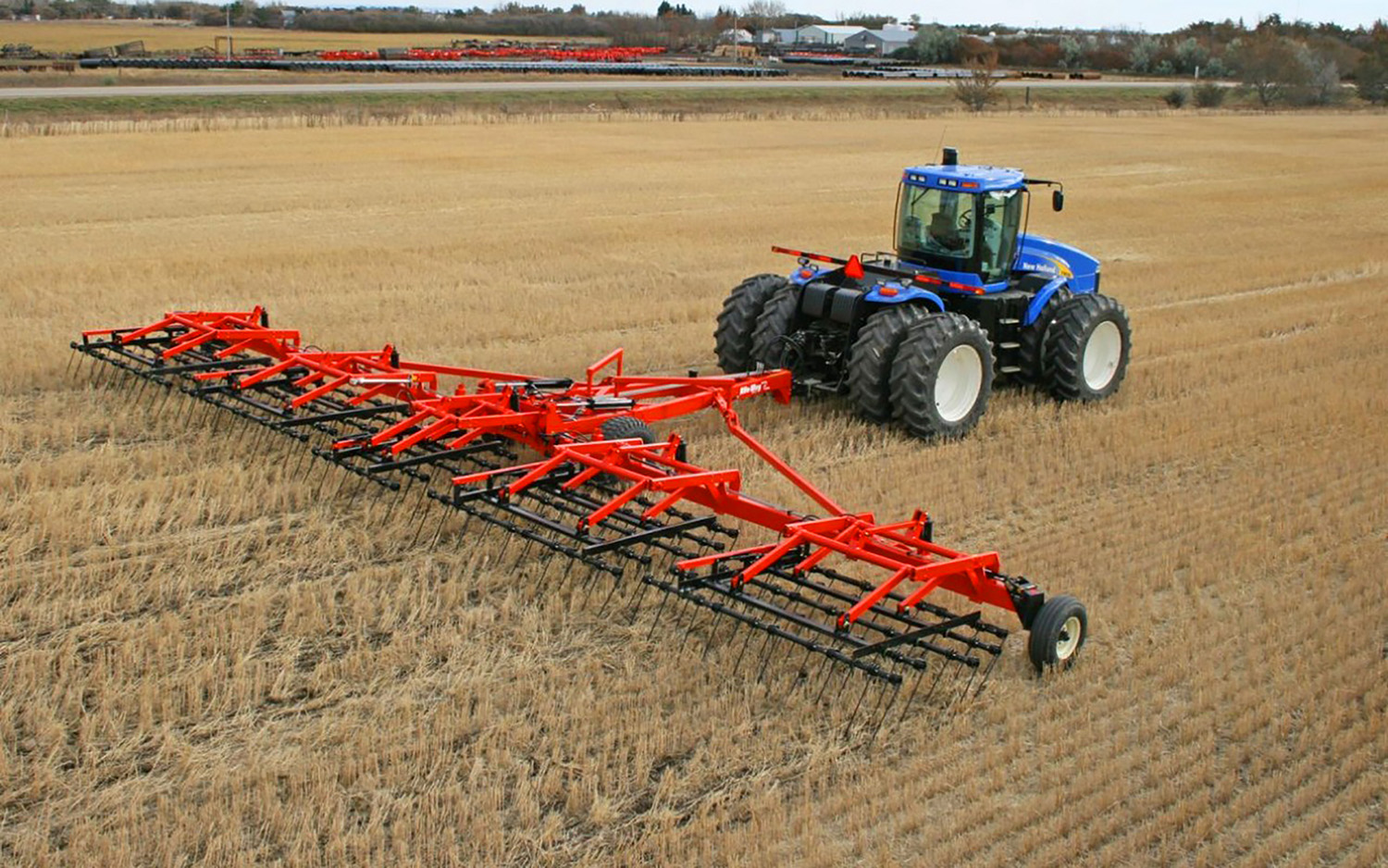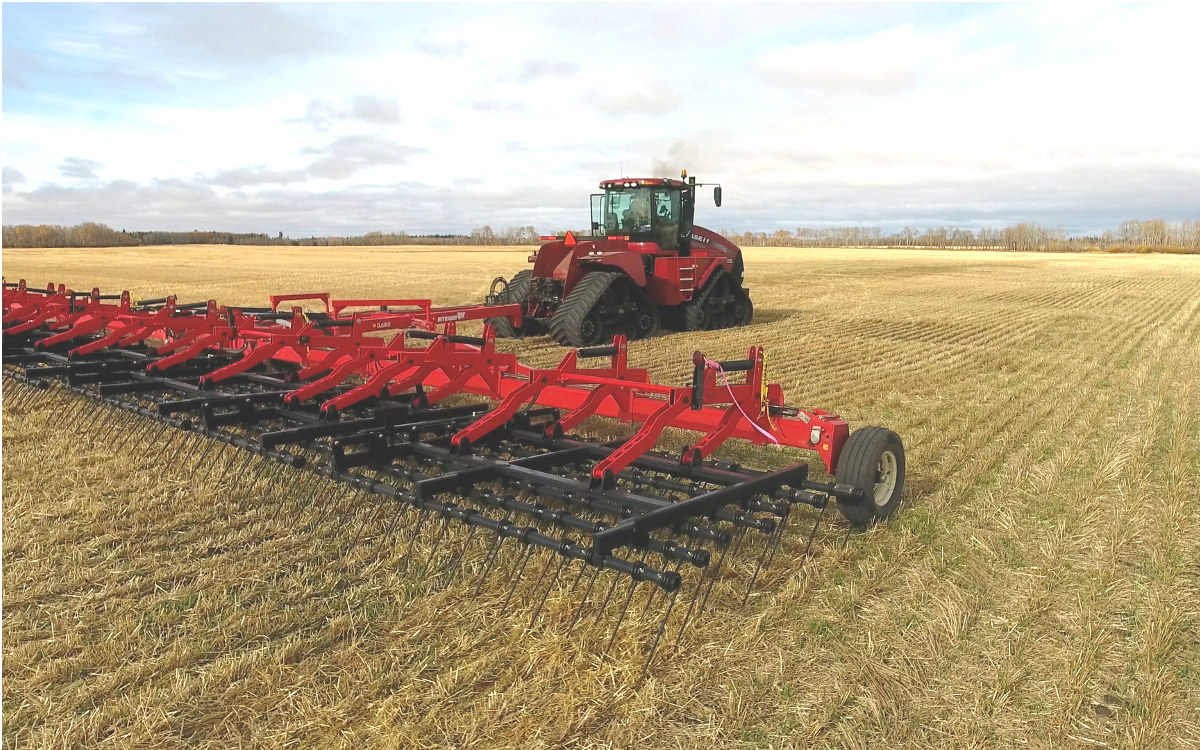Flaman Rentals Blog
RSS feed
Categories
Recent activity
- What's it like being a Flaman Rental Dealer?
- A Brief History of the Newest Flaman Store in Swift Current
- Disney's NEW Leadership Excellence Training Course
- Disney's Approach To Quality Service
- Disney's Approach To Quality Service
- Trailering 'Rules of the Road' Updated
- 10th Annual Frank J. Flaman Foundation Gala 2016
- Why Frank Cares
Authors
Archive
6 Reasons to Use a Riteway 7-Bar Harrow This Year
Posted by Mitch Flaman May 06, 2022
When it’s time to get your fields prepped for seeding, there are a few different equipment options to choose from.
For many years, harrows have been used to prepare fields in different capacities. Whether you are levelling off ruts, busting up hardpan, or removing trash before seeding, both the Riteway 5-bar and 7-bar harrows have a specific purpose in the tillage cycle. With low-till or zero-tillage farming practices gaining popularity in the last decade, you need a way to create ideal seedbeds for your crop.

Riteway 5-Bar Heavy Harrow in use
Heavy harrows, often known as 5-bar harrows, are very common and do a great job moving dirt, even in wet conditions. The Riteway 7-bar harrow is lighter than a traditional heavy harrow and has twice as many tines, offering you the flexibility you need to deal with excess straw post-harvest and residue management before seeding.
.jpg)
Riteway 7-Bar Harrow
We put together six reasons why you should consider using a Riteway 7-bar harrow this year.
1. Trash and Residue Removal
“At its most basic point: if you’re looking to move soil – stick with your 5-bar, but if you’re looking for trash management there’s no better way to go than the 7-bar harrow.”
Brad Grass, Territory Sales Manager at Riteway Manufacturing
Think about how you use a large fan rake to clean up all the leaves in the fall. You go over the surface of your lawn, gently collecting the leaves and removing them. When using a garden rake, you collect everything from the roots of your grass – eliminating everything that protects the soil.
7-bar harrows work much the same as a large leaf rake, cleaning up and breaking down straw residue, while leaving the soil mildly agitated. Featuring twice as many tines as a heavy harrow, the 7-bar’s ½” tines provide better agitation as the harrow floats over the field – allowing for greater trash removal and distribution.
.jpg) 24" long 1/2" tines on the Riteway 7-Bar Harrow
24" long 1/2" tines on the Riteway 7-Bar Harrow
2. Moisture Retention
The smaller diameter tines on the 7-bar harrow provide greater agitation while disturbing less ground. By only mixing up the top layer of the soil, it allows the moisture to stay in the ground. The goal is to remove extra trash on the surface, not dry out the soil.
3. Less Soil Compaction
The 82’ Riteway 7-bar harrow weighs 19,900 lbs and is the heaviest and strongest 7-bar in its class. Despite its weight, the 7-bar won’t compact the soil down as much as a heavy harrow because it floats over the topsoil instead of digging down. Less compaction, combined with better moisture retention, creates a better environment for plant development.

Riteway 7-Bar Harrow in use
4. Seed Bed Prep
Remove all the trash and debris left from harvest and prepare your seedbeds without removing soil. This allows the seed drills to move easily through the field with less straw build-up around the knife. After using a 7-bar harrow, you’ll end up with a nice, clean surface for a fresh start in the spring.
Riteway 7-Bar Harrow field demo
5. Herbicide Application
As some weeds become resistant to certain herbicides, older chemicals are making a comeback. Because granular herbicide mixes well with topsoil, the 7-bar harrow can effectively protect your crops from invasive weeds. The 7-bar helps introduce the granular chemical into the soil just enough so that it can be evenly distributed throughout the field.
6. Mechanical Weed Removal
The 7-bar’s lightweight spring tines help manage weeds that start to thrive in your field after harvest. By damaging these weeds enough so they stop growing, your crops have less competition for nutrients in the soil.
.jpg) Spring Pressure Kit on the Riteway 7-Bar Harrow
Spring Pressure Kit on the Riteway 7-Bar Harrow
As you can see, there are many advantages to using a Riteway 7-bar harrow to prepare your fields for seeding and manage the crop residue after harvest.
Brad, Riteway Manufacturing, walks through the features on the 7-Bar Harrow
------
If you have any questions about our Riteway 7-Bar, Heavy, or Rotary Harrows, or any of our other tillage equipment, contact us or visit your nearest Flaman location.
Posted in Product Information | Tagged with Riteway harrow 7-bar heavy harrow tillage field prep seeding | More articles by Mitch Flaman

 Locations
Locations



